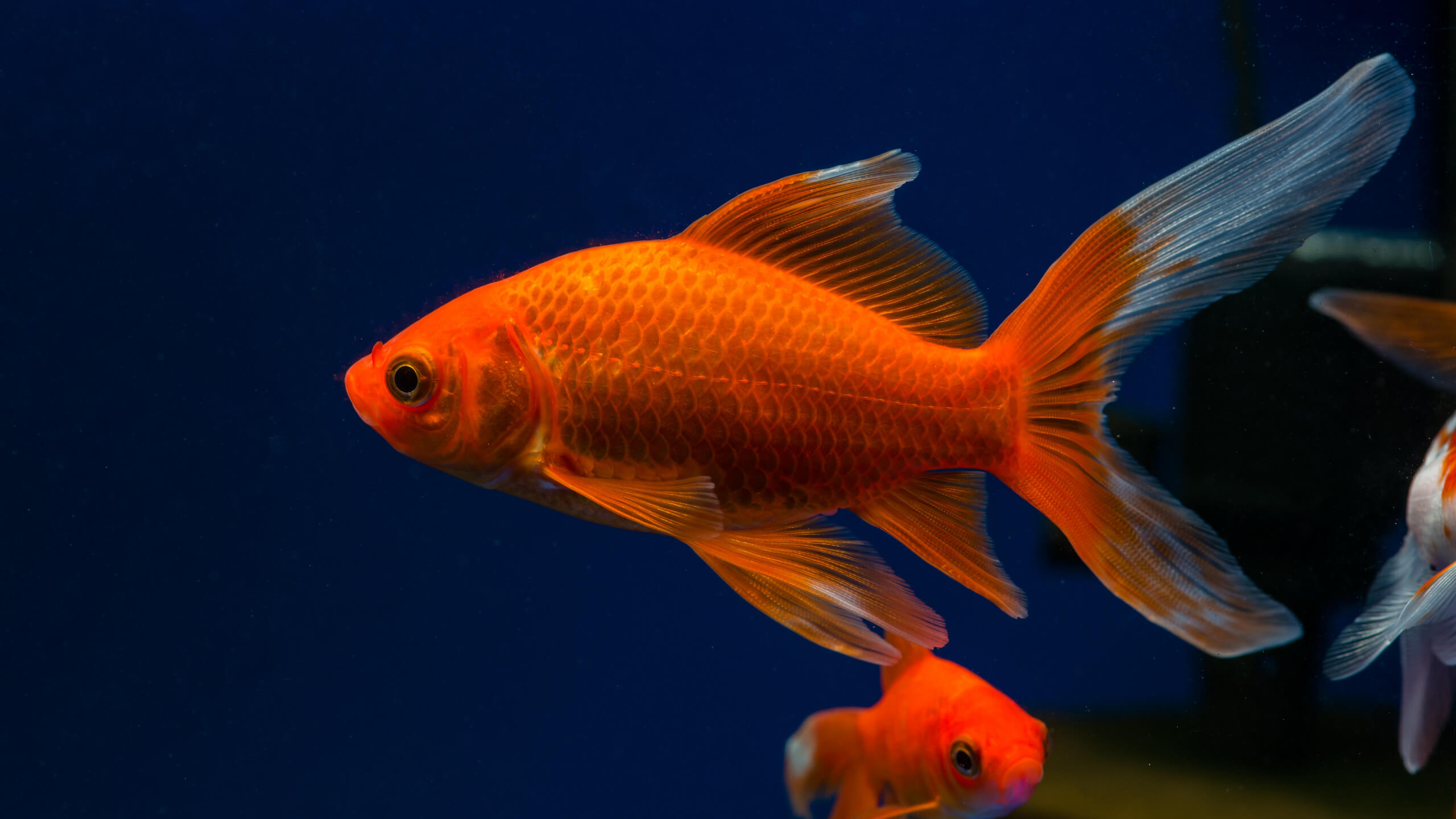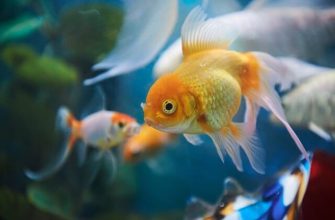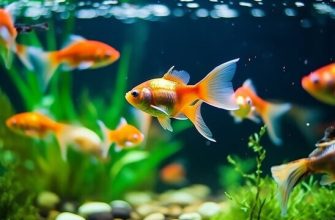Goldfish are one of the most popular pet fish, known for their bright orange color and flowing fins. But despite their widespread popularity, there’s still a lot of mystery surrounding these aquatic creatures. One of the most common questions people have about goldfish is – do they have teeth?
Goldfish originate from eastern Asia, where they were first domesticated from wild carp over a thousand years ago. Selective breeding led to the development of many distinct goldfish breeds that thrive in home aquariums today. Though they lack the fierce jaws of their carp ancestors, goldfish have adapted unique ways of feeding without teeth.
Understanding goldfish anatomy and eating habits reveals surprising insights about how these toothless fish survive. While they may look harmless, goldfish can be quite scrappy when it comes to getting their next meal. Join us as we dive into the toothless world of goldfish to uncover how they bite, chew, and swallow food with no teeth at all!
Anatomy of Goldfish

Goldfish belong to the carp family Cyprinidae and are one of the most popular aquarium fish worldwide. They have a streamlined, oval-shaped body with a single dorsal fin on their back, one anal fin on the underside behind the anus, and a forked caudal fin (tail fin). Their paired pectoral fins are located on each side behind the gills and help with steering and braking. The ventral fins on the belly aid in steering as well.
Goldfish typically grow to 4-12 inches in length, with body shapes ranging from slender to rounded. Selective breeding has produced many color variations, including orange, red, black, white, yellow, calico, and combinations of these colors. The fins can be transparent or brightly colored. Fantail and veiltail varieties have elongated fins. Other distinctive features include protruding eyes, small mouths, and no visible teeth. Overall, the anatomy of goldfish allows them to swim gracefully and efficiently.
Do Goldfish Have Teeth?
Goldfish do not have teeth like humans or other mammals. Instead, they have toothless jaws made of bony plates called pharyngeal teeth. These toothless jaws are located in the back of their throats and are used to grind up food before swallowing.
Goldfish jaws contain two strong, bony plates on the top and bottom. The plates have small ridges or serrated edges that help them grip and crush food. But unlike human teeth, the goldfish’s pharyngeal teeth do not fall out and grow back. They are fixed structures as part of the jaw. So while goldfish do technically have “teeth”, they look and function very differently than human teeth.
How Do Goldfish Eat Without Teeth?

Goldfish do not have teeth in their mouth like humans do, but they do have teeth located farther back in their throats. Goldfish use muscular throats and gills to grind up and swallow food efficiently without front teeth. When goldfish feed, they suck food into their mouths and back to their pharynx where teeth known as pharyngeal teeth are located. The pharyngeal teeth grind and break down food into smaller pieces that can be digested more easily. Powerful muscles in the throat contract to crush food against the bony plates where the pharyngeal teeth are attached.
Goldfish are omnivores and in the wild eat a variety of foods including small crustaceans, insects, plant matter, and detritus. They utilize their throat muscles and pharyngeal teeth to grind and swallow their varied diet. Goldfish do not chew food like humans – instead they crush and swallow food whole. Their versatile diet and specialized throats allow goldfish to consume a wide range of foods efficiently without needing teeth inside their mouths.
Biting Behavior
Goldfish do not have teeth, so they cannot bite in the same way as animals with teeth. However, goldfish may nibble or appear to “bite” at times. This is usually harmless behavior and not true biting.
Some reasons goldfish may nibble or nip include establishing dominance, curiosity, mistaking decor or tankmates for food, or getting territorial over resources like food. Larger goldfish may also nibble at smaller tankmates. This is not the same as predatory biting and does not usually harm the other fish.
The nibbling behavior is part of natural goldfish instincts and living in a tank environment. It does not mean they are trying to eat or attack the other fish in a vicious manner. Providing an adequate tank size, proper nutrition, and tank enrichment can help curb excessive nibbling behavior. Overall, nibbling is normal goldfish behavior and not a sign of aggression or that the fish need teeth to bite. Their toothless mouths are adapted for their natural diet.
Caring for Goldfish Teeth

Goldfish do not have teeth in their mouth like humans, but they do have teeth located in their throat called pharyngeal teeth. These teeth help them grind and break down food before swallowing.
Since goldfish lack teeth in their mouth, it impacts the type of diet and feeding they require. Goldfish are omnivores and can eat both plant and meat-based foods, but without teeth they need soft, bite-sized foods that can be easily chewed. Their diet should consist of flakes, pellets, live/frozen brine shrimp, daphnia, and blanched vegetables. Avoid large chunks or hard foods like freeze-dried krill that may be difficult for them to break down and digest.
When feeding goldfish, drop small amounts of food at a time and allow them to eat before adding more. This prevents uneaten food from sinking and deteriorating water quality. Target feeding once or twice a day only what they can completely finish within a few minutes. Their lack of teeth means goldfish are prone to overeating if given the chance, which can lead to swim bladder disorders. Providing a nutritious, varied diet in proper portions is key to caring for goldfish teeth and supporting overall health. With the right diet and feeding technique, goldfish can thrive without teeth in their mouths.
Fun Goldfish Teeth Facts
Goldfish are a common aquarium fish known for their orange-gold coloring. What’s interesting is that despite their reputation as fish, goldfish actually lack teeth!
This surprises many people since we generally expect fish to have teeth. But goldfish are toothless fish that still manage to eat and survive just fine without them.
So how did goldfish evolve to not need teeth? It turns out goldfish do have tooth-like structures, but they are located in their throat rather than their mouth. These throat “teeth” are called pharyngeal teeth and they help goldfish grind up food.
Goldfish use their muscular throat to crush and swallow food instead of chewing it. Their diet consists of insects, plants, and detritus which can be broken down without teeth in their jaws.
While toothless, goldfish do exhibit a chewing motion with their mouth. This is likely an evolutionary holdover from when their ancestors did have oral teeth. But despite the motion, no teeth are doing any actual chewing in goldfish mouths today!
Goldfish Teeth Myths
There are a few common myths and misconceptions about goldfish teeth. One myth is that goldfish teeth continue growing indefinitely, eventually causing problems for the fish. In reality, goldfish teeth do not grow continuously. Their teeth are similar to human baby teeth and fall out and regrow throughout their lives.
Another myth is that goldfish use their teeth to bite. While goldfish do technically have teeth, they do not use them for biting. Goldfish are omnivores and use their teeth for grinding up plant matter and small insects. They do not have large sharp teeth for biting and chewing like some other fish species.
Some people may also believe that goldfish teeth fall out easily or that you can see their teeth. In fact, goldfish teeth are tiny and embedded in their gums, not visible from the outside. They typically do not fall out except when shed and replaced with new teeth.
Overall, goldfish do have small teeth, but they do not match some of the exaggerated myths about growing indefinitely, falling out easily, or being used for biting. Their teeth serve more subtle purposes like grinding up food.
Why Goldfish Don’t Need Teeth

Goldfish evolved without teeth because their natural diet consists of plants, algae, insects, and other small invertebrates that don’t require chewing or biting to digest. Their toothless mouths allow them to suck in food efficiently and process it internally.
Many other fish species adapted similarly and lack teeth, including carp, catfish, and some cichlids. These species use suction feeding and pharyngeal teeth to grind up and digest food once it’s swallowed. Their toothless mouths likely evolved to improve suction feeding as well as reduce injuries during feeding frenzies when living in crowded conditions.
Overall, goldfish and other toothless fish are well adapted to their natural diets and environments. Their specialized mouths allow them to eat efficiently without needing teeth to chew or capture prey. While surprising to some owners, their lack of visible teeth is an evolutionary adaptation that works well for their lifestyles.
Conclusion
Goldfish are a popular aquarium fish that have been domesticated and bred for unique colors and tail shapes. While they may exhibit biting behaviors, goldfish do not actually have teeth inside their mouths.
Instead, goldfish have a muscular throat and pharynx that allows them to swallow food whole. Their diet in captivity consists of fish pellets and plants. In the wild, they are omnivorous and feed on insects, crustaceans and vegetation.
Goldfish toothlessness sets them apart from many other fish species. While they lack traditional teeth, their specialized mouths allow goldfish to thrive on the food sources available in their tank or pond environments. Their biting instincts come from ancient ancestors that did have teeth.
Overall, the toothless nature of goldfish makes them unique among their bony fish relatives. While goldfish do not have teeth, they have adapted methods of eating that allow these popular fish to survive and entertain aquarium hobbyists for years. Their golden color and flowing fins continue to make them one of the most beloved aquarium fish species.








